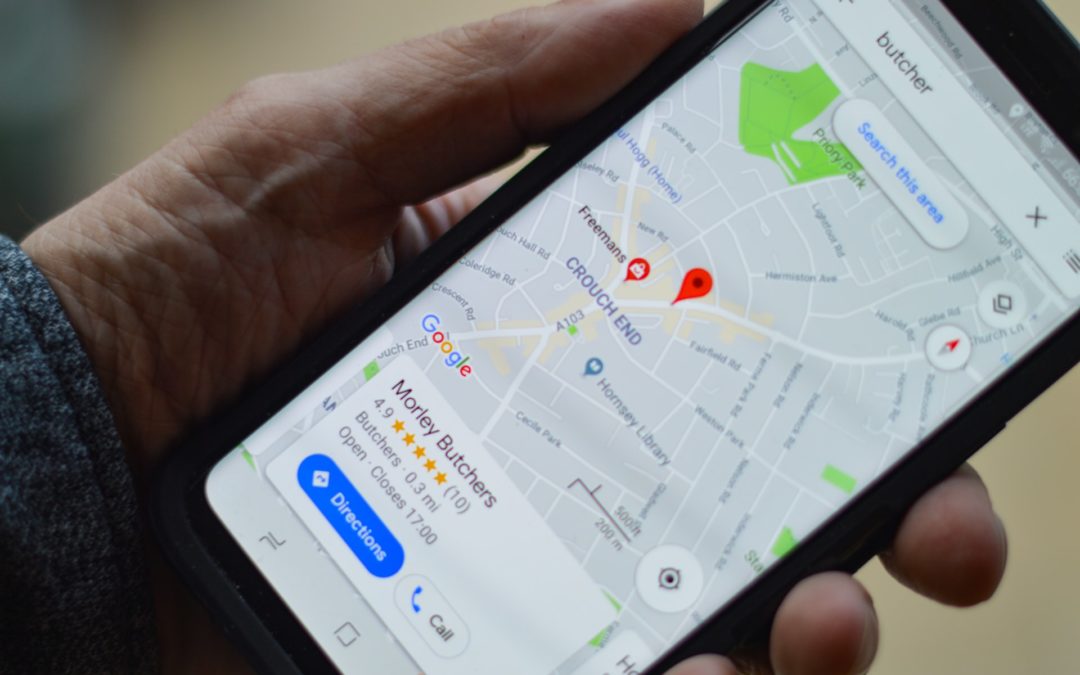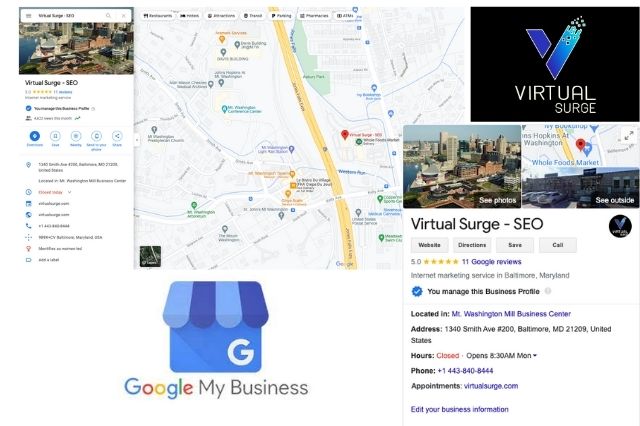
Local SEO vs. National SEO: Unraveling the Variances
Local SEO and national SEO are crucial aspects of digital marketing strategies for businesses today. Understanding the critical differences between these two approaches can significantly impact the success of your online presence.
Local SEO enhances your online presence to draw more business from relevant local searches, which is particularly beneficial for companies with physical locations or targeting specific geographic areas. In contrast, national SEO targets a broader audience nationwide or internationally, making it suitable for online-based businesses or those with a wider target market.
Local SEO is crucial for enhancing visibility on platforms such as Google Maps and local search results, enabling businesses to engage with local customers and increase foot traffic to physical stores. Conversely, national SEO is essential for companies aiming to extend their reach beyond regional boundaries and secure a larger market share at a national or global level.
Whether you are a small local business trying to attract nearby customers or a national brand seeking widespread visibility, understanding the nuances of local SEO versus national SEO is crucial for effectively optimizing your digital marketing efforts. Stay tuned to delve deeper into the specifics of these two SEO strategies and discover how they can benefit your business in reaching its target audience.
Understanding Local SEO
Local SEO is vital in helping businesses reach their target audience in specific geographic areas. Local businesses must prioritize optimizing their online presence for local searches to attract nearby customers actively seeking their products or services. Through adept comprehension and application of local SEO strategies, businesses can heighten their visibility, draw greater foot traffic to their brick-and-mortar establishments, and bolster sales.
Importance of Local SEO
Local SEO is crucial for businesses targeting consumers in specific locations. When potential customers search for products or services “near me” or in a specific city, a robust local SEO strategy ensures the business prominently appears in search engine results. This visibility increases website traffic and drives qualified leads who are more likely to convert into customers due to their proximity to the business. With a solid local SEO approach, companies can avoid losing out to competitors in the local market.
Local SEO Strategies
- Google Business Profile Optimization: Claiming and optimizing a Google Business Profile listing is a fundamental step in local SEO. Businesses can enhance their local search visibility and credibility by providing accurate business information, responding to reviews, posting updates, and utilizing Google My Business features effectively.
- Local Keyword Targeting: Incorporating location-specific keywords in website content, meta descriptions, and online listings helps businesses rank higher in local search results. Understanding the search terms customers use when looking for local businesses is essential for optimizing content and attracting relevant traffic.
- Online Reviews: Positive reviews from satisfied customers build trust and impact local search rankings. Promoting customers to leave reviews on platforms such as Google, Yelp, and industry-specific sites can enhance a business’s online reputation and visibility in local search results.
By applying these local SEO strategies, ensuring uniform business information across online platforms, and fostering a robust local online presence, businesses can markedly enhance visibility and attract customers in the local market.
Differentiating National SEO
National SEO focuses on optimizing your online presence across the country or globally rather than targeting specific local areas. It aims to capture a broader audience and increase visibility on a national scale. Understanding the nuances of national SEO is crucial for businesses seeking to reach a broader demographic.
Purpose of National SEO
The primary goal of national SEO is to enhance visibility and ranking on search engine results pages (SERPs) across a larger geographic region. Unlike local SEO, which targets specific locations, national SEO caters to a broader audience, making it ideal for businesses with a wide customer base or those operating nationally.
National SEO Strategies
- Content Marketing: Creating high-quality, relevant content that appeals to a national audience is essential for national SEO success. This includes optimizing website content, blog posts, and articles with relevant keywords that resonate with a broader demographic.
- Backlink Building: Establishing a varied collection of top-notch backlinks from reputable websites is paramount for national SEO. Backlinks indicate to search engines that your website is authoritative and reliable, enhancing the likelihood of securing higher rankings in national search results.
- Technical SEO: Implementing technical SEO best practices is vital for national visibility. This includes optimizing website structure, improving site speed, and ensuring mobile responsiveness to provide a seamless user experience for visitors nationwide.
By aligning these strategies with your national SEO efforts, you can enhance your online presence, drive organic traffic, and improve visibility on a national scale. National SEO allows businesses to expand their reach and connect with a broader audience, making it a valuable asset in today’s digital landscape.
Critical Differences Between Local SEO and National SEO
Exploring the fundamental disparities between local and national SEO strategies can provide valuable insights for businesses aiming to boost their online visibility. Understanding how each approach varies in geographical focus, competitive landscape, and audience targeting is crucial for optimizing search engine performance.
Geographical Focus
Local SEO involves targeting specific geographic areas, such as cities or regions, to attract nearby customers actively seeking local products or services. Conversely, national SEO extends its reach across a wider spectrum, targeting a broader audience spanning nationwide or even global boundaries. While local SEO focuses on enhancing visibility within a particular vicinity, national SEO seeks to maximize exposure on a larger scale.
Competitive Landscape
In local SEO, competition is typically more concentrated within specific regions, necessitating a deep understanding of local market dynamics to stand out effectively. On the contrary, National SEO faces a broader array of competitors on a national or global level, requiring strategies that can navigate through a more extensive and diverse landscape. Recognizing and adapting to the competitive landscape is pivotal in devising successful SEO tactics tailored to local or national contexts.
Audience Targeting
Local SEO thrives on catering to the needs of local audiences seeking immediate solutions or services nearby. Local SEO strategies strive to connect businesses with their close community by aligning content and keywords with localized intent. In contrast, national SEO targets a wider audience with varied interests, focusing on optimizing visibility across broader demographics and regions. Tailoring content to resonate with diverse audiences nationally forms the core of effective national SEO campaigns.
Understanding the nuances between local SEO and national SEO enables businesses to tailor their SEO efforts according to specific goals, target audiences, and competitive landscapes. By leveraging the distinct advantages of each approach, companies can create a robust SEO strategy that effectively aligns with their objectives and amplifies their online presence.
Importance of Local SEO for Businesses
Local SEO is an essential tactic for businesses seeking to enhance their online presence within a specific geographic region. Through local search optimization, companies can guarantee that their products or services are prominently featured to potential customers in their vicinity during relevant searches. Let’s explore further why local SEO holds such significance for businesses.
Targeting Local Customers
Local SEO enables businesses to focus on reaching potential customers within their immediate vicinity. This mainly benefits brick-and-mortar stores looking to attract foot traffic or service-based companies catering to a local clientele. Appearing in local search results enables businesses to engage with customers who are actively seeking their offerings nearby.
Building Trust and Credibility
A business consistently visible in local search results builds trust and credibility with local customers. By showcasing positive reviews, accurate business information, and location details, companies can establish themselves as reliable and reputable within their community. This trust is invaluable for attracting and retaining local customers.
Increasing Foot Traffic and Sales
Optimizing for local SEO can significantly impact a business’s foot traffic and sales. When potential customers find a company ranking high in local search results, they’re more inclined to visit the physical store or make a purchase. Businesses can drive more in-store visits and conversions by ensuring accurate business information, including address, phone number, and store hours.
Staying Ahead of Competitors
In today’s competitive market, businesses must stay ahead of local competitors. A robust regional SEO strategy can give businesses a competitive edge by ensuring they appear above competitors in local search results. Such visibility can result in heightened brand awareness, enhanced customer engagement, and expanded market share within the local area.
Enhancing Mobile Search Performance
With the rise of mobile search, optimizing local SEO is essential for businesses targeting on-the-go consumers. Local search optimization ensures that companies appear in mobile search results, making it easy for customers to find and contact them quickly. Providing a seamless mobile experience allows businesses to attract the attention of potential customers searching for relevant products or services.
Conclusion
In SEO, understanding the differences between local and national strategies is crucial for businesses aiming to reach their target audience effectively. At the same time, national SEO caters to a broader scope and seeks to reach a national or international audience; local SEO zeroes in on targeting specific geographical areas. For local businesses, implementing a robust local SEO strategy is paramount to enhancing visibility within their community and attracting nearby customers.
Importance of Local SEO for Local Businesses
Local SEO goes beyond enhancing search engine rankings; it’s about engaging with potential customers nearby who are actively seeking products or services within their local area. By optimizing for local search, businesses can ensure they appear in relevant local searches, increasing foot traffic to physical stores and generating leads from nearby prospects. This targeted approach enables enterprises to establish a solid online presence within their local market and stand out.
Leveraging National SEO for Greater Reach
On the other hand, national SEO is geared towards a wider audience reach, making it suitable for businesses with a broader target demographic or those offering products or services on a national scale. While national SEO involves optimizing for more general keywords and competing nationally, local businesses can still benefit from incorporating national SEO strategies to expand their reach beyond local boundaries. Through the integration of both local and national SEO strategies, businesses can develop a holistic digital marketing approach that optimizes online visibility and fosters sustainable growth.
Striking the Right Balance
Finding the right balance between local and national SEO is vital for businesses seeking optimal results in their online marketing efforts. While local SEO helps companies establish a strong presence in their local community and attract nearby customers, national SEO enables them to reach a wider audience and drive traffic on a national scale. By tailoring their SEO approach to align with their business goals and target audience, businesses can effectively leverage the power of both local and national SEO to enhance their online visibility, attract quality leads, and drive conversions.
Contact Virtual Surge today for more information and to kickstart your SEO services, whether your business is local or national-based. Unlock the power of targeted local SEO to drive foot traffic or expand your reach with national SEO strategies. Start optimizing your digital presence now!






